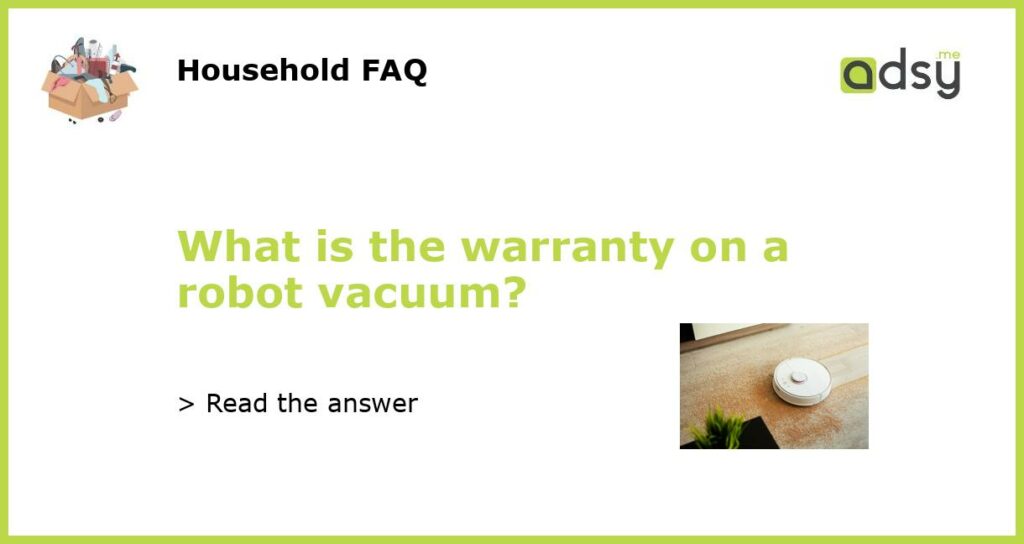Understanding the Warranty on a Robot Vacuum
When purchasing a robot vacuum, it is important to understand the warranty that comes with it. The warranty is a guarantee from the manufacturer that the product will function properly and be free from defects. In this article, we will explore the different types of warranties available for robot vacuums, what they typically cover, and what to look for when choosing a vacuum based on its warranty.
Types of Warranties
There are generally two types of warranties offered for robot vacuums: the manufacturer’s warranty and extended warranties.
The manufacturer’s warranty is typically included with the purchase of the vacuum and covers any defects or malfunctions during a specified period. The length of the manufacturer’s warranty can vary depending on the brand and model of the vacuum, but it is typically between one and three years.
Extended warranties, on the other hand, are additional coverage that can be purchased separately. These warranties usually extend the length of the manufacturer’s warranty and provide additional protection against accidental damage or breakdowns. Extended warranties are optional and can vary in terms of coverage and cost.
What is Covered?
When it comes to the warranty coverage for a robot vacuum, it is important to read the terms and conditions provided by the manufacturer. Generally, the warranty covers any defects in materials or workmanship that arise during normal use of the vacuum.
However, it is important to note that the warranty does not cover damages caused by misuse, neglect, or accidents. For example, if you accidentally drop the vacuum and it gets damaged, it would not be covered under the warranty.
Additionally, some warranties may include specific exclusions, such as wear and tear of consumable parts like brushes or filters. It is important to thoroughly read the warranty documentation to understand what is covered and what is not.
What to Look for in a Warranty
When choosing a robot vacuum based on its warranty, there are a few key factors to consider:
– Length of Coverage: The length of the warranty can vary between different brands and models. A longer warranty period can provide you with peace of mind and save you money on potential repairs or replacements.
– Customer Support: It is important to research the reputation of the manufacturer’s customer support. A responsive and helpful customer support team can make the warranty process smoother in case you encounter any issues with your vacuum.
– Extended Warranty Options: Some manufacturers offer the option to purchase extended warranties, which can provide additional coverage. If you are particularly concerned about accidental damage or breakdowns, an extended warranty might be worth considering.
How to Claim Warranty
If you encounter any issues with your robot vacuum within the warranty period, you will need to follow the manufacturer’s warranty claim process. This typically involves contacting the manufacturer’s customer support, providing them with the necessary information and details about the issue, and following their instructions for repair, replacement, or refund.
It is important to keep your original proof of purchase, as it may be required when making a warranty claim. Additionally, some manufacturers may require you to register your vacuum online or provide the serial number to be eligible for warranty coverage.
Additional Considerations
While the warranty is an important factor to consider when purchasing a robot vacuum, it should not be the sole deciding factor. It is important to also research the vacuum’s features, capabilities, and user reviews to ensure it meets your needs and expectations.
Additionally, caring for your robot vacuum properly can help prolong its lifespan and reduce the likelihood of needing to use the warranty. Regularly cleaning and maintaining the vacuum, following the manufacturer’s instructions, and using it on suitable surfaces can help prevent unnecessary wear and tear.






